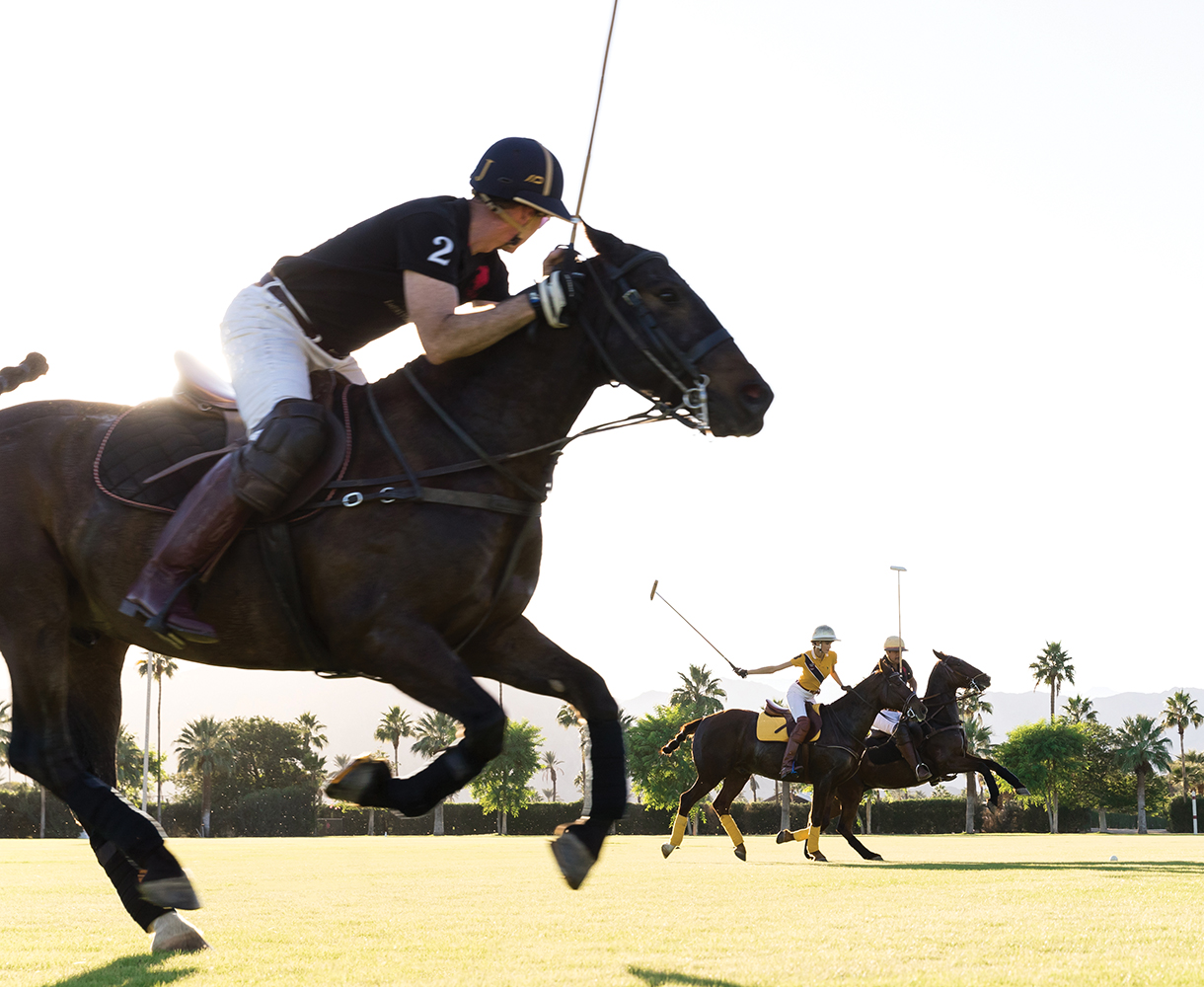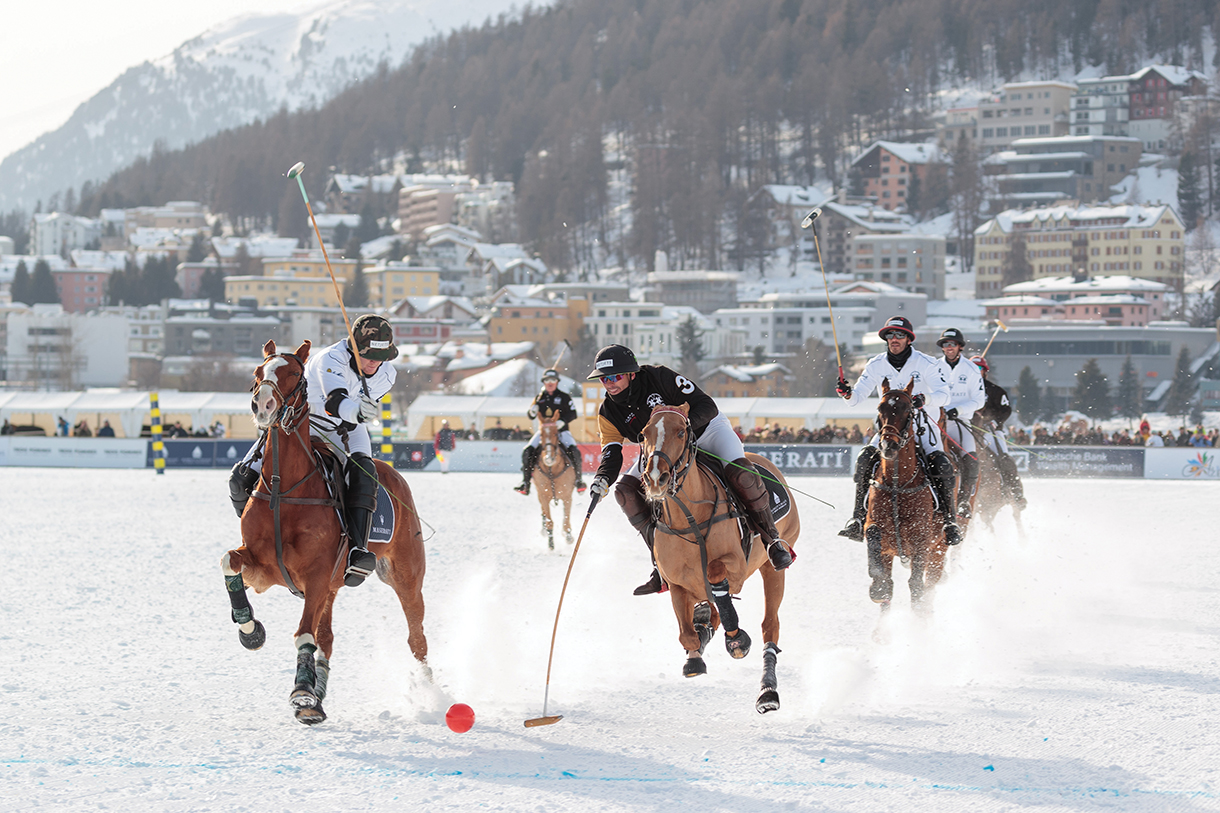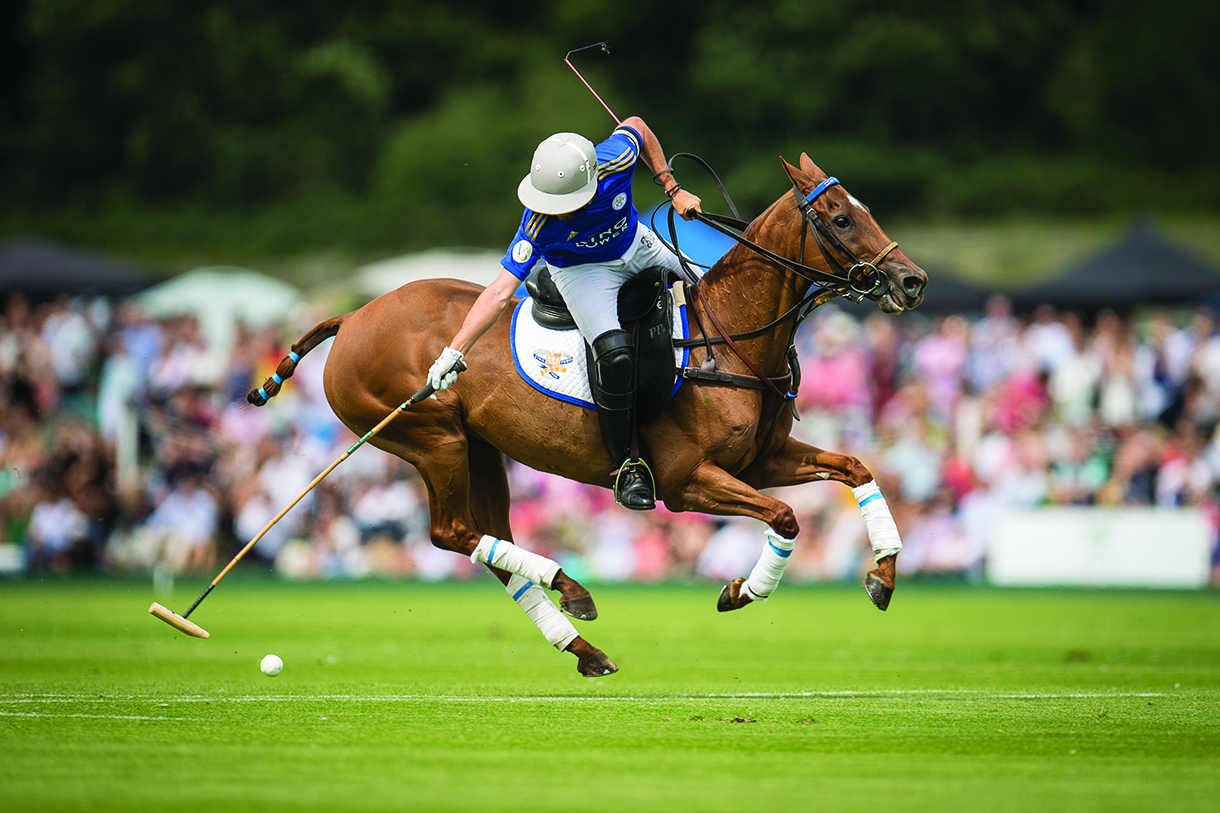
The A to Z of Polo
An international affair, the sport of kings remains a ticket to the world for both the players and the tony crowds who follow the matches each year from Switzerland to Aspen to Argentina.
The ancient game originated in Persia and was spread through colonization. More than 2,000 years ago it was played as an element of cavalry training and then found its way to India via the Muslim conquest of the 13th century. When the British colonized India, polo became a favored occupation of English cavalry units, given its utility in training mounted troops. Colonial cavalrymen took polo home with them, and by the late 19th century it had become popular among the royal family and nobility. By 1875, matches in London attracted thousands of spectators.
Shortly thereafter, polo was introduced to the United States and became fashionable in New York. British landowners took the game to Argentina, where the broad, grassy Pampas and cattle-ranching lifestyle made it the perfect pastime. Today, Argentina is the dominant force in international polo and the sport rivals football in popularity. All of the world’s 10-goal players are Argentine.
One of history’s best-known enthusiasts may be Sir Winston Churchill, who began his polo career as a young subaltern and found fame as a player during a posting to India. “A polo handicap is a person’s ticket to the world,” he famously said—the sentiment still ringing true today. Professional polo players, as well as amateurs and fans, follow an annual trajectory that takes them around the globe. Enter the polo world and you’ll find that it’s small indeed. Any “polo person,” even a neophyte with a minus-two handicap, can find entrée into a select social milieu.

The international season gets off to a glittering start with snow polo. The French ski towns of Val d’Isère, Megève, and Courchevel all host tournaments, but the Snow Polo World Cup (snowpolo-stmoritz.com) in St. Moritz, Switzerland, is the top ticket. Conveniently, the tournament comes on the heels of the annual Davos World Economic Forum, a short train or private jet ride away. The players clash on a snow-covered frozen lake, while an international crowd of spectators snuggle into their Moncler jackets and sip Perrier-Jouët in the VIP tents.
Once the sun sets on St. Moritz, it’s off to balmy South Florida, also in January, to see some of the finest polo the sport has to offer. The United States Polo Association (USPA) sponsors its Gladiator Polo (gladiatorpolo.com) series at the International Polo Club of Palm Beach (IPC). This nearly 250-acre stadium is hallowed ground for enthusiasts, where members and their guests can watch the action from boxes high above the field.
The US Open Polo Championship (uspolo.org) is one of the biggest days at IPC, and the chic Palm Beach crowd is always spectacularly turned out. Usually held around Easter, the tournament sees spectators resplendent in Lily Pulitzer and the vibrant hues of South Florida. Another essential match is the annual Lucchese 40-Goal Polo Challenge (uspolo.org), which fields two teams of 10-goalers to benefit the Polo Players Support Group, an organization that provides financial assistance to injured or ill players and grooms. A highlight of the President’s Day weekend, it’s some of the best polo you’ll see outside of Argentina.
The World Polo League (worldpolo.org), founded jointly by Marc and Melissa Ganzi and Bob Jornayvaz in 2019, features the highest-goal polo outside of Argentina, with 26-goal matches. The South Florida–based World Polo League was created to offer superior play with simplified rules that drive a faster, more spectator-friendly pace. Matches are held at the Ganzis’ Grand Champions Polo Club, just down the road from IPC, or at Jornayvaz’s nearby Valiente Polo Farm.
When the Florida season winds down, the polo exodus heads to England, where venues like Guards Polo Club in Windsor Great Park and Cowdray Park Polo Club host some of the biggest events in England’s summer social season. For the quintessential English polo experience, look no further than the Cartier Queen’s Cup (guardspoloclub.com) in May and June, where the crowd is quite aristocratic. The Queen attends, watching the match from the Royal Enclosure, and presents the prizes, which include a Cartier watch for each member of the winning team.

The King Power Gold Cup (cowdraypolo.co.uk), held at Cowdray Park Polo Club in July, is the season’s other premier event. Only about 53 miles southwest of London, the tournament boasts a glittering crowd and atmospheric countryside setting. Polo has been played on the grounds for more than 100 years, and the ruins of the old Cowdray Castle offer a breathtaking backdrop to the field.
During the summer season in the United States, top East Coast matches can be enjoyed at Peter Brant’s Greenwich Polo Club, located within easy striking distance of New York City. The Hamptons, a traditional polo destination now making a comeback, boasts the tony Polo Hamptons (polohamptons.com) events in Bridgehampton in June and July. They’re typically one of the hottest tickets of the season and sell out quickly.
You may not associate polo with Colorado, but it’s becoming an important destination via the Aspen Valley Polo Club, also owned by the Ganzis. The marquee event of the summer is the annual Aspen Valley Hospital Foundation fundraiser Chukkers, Champagne, & Caviar (aspenvalleypoloclub.com), which in 2019 generated more than $1 million for the cause.
On the West Coast, the most elegant venue is the Santa Barbara Polo and Racquet Club. Prince William played there several years ago, and August’s annual Pacific Coast Open (uspolo.org) is the match to attend. Santa Barbara and the nearby Santa Ynez Valley are also home to a number of beautiful private fields, including the Piocho Ranch.
At the end of summer, the action in Europe moves to Spain and France. For high-goal polo, the key destination is the Santa María Polo Club in Sotogrande, Spain, where in July and August you’ll find the world’s top-ranked players. The Torneo Internacional de Polo (tip.santamariapoloclub.com) has been raised to 22 goals and is now considered one of the most important tournaments in Europe. The Costa del Sol location adds the allure of the Mediterranean to the high-goal scene, and there’s enough golf and nightlife to keep even the weariest jet-setter entertained.
Deauville (where English player Arthur “Boy” Capel helped set up Coco Chanel in her first shop) hosts the best in French polo. The town’s Coupe d’Or (deauvillepoloclub.com) is the match to attend in August, with the Open du Soleil (polo-st-tropez.com) in Saint-Tropez being another popular option. But there’s nothing like polo in Argentina. Argentines live and breathe the game; the national sport is also big business. The Tortugas and Hurlingham Opens are two of the biggest tournaments, but the season’s culmination, the Super Bowl of polo, is the Argentine Open (aapolo.com). The experience at Pilar stadium for polo fans cannot be matched anywhere in the world. Passionate fans are riveted by the play, and the energy in the stands is electrifying.
The Argentine Open is barely over before the star players are off to Aspen to compete in the St. Regis World Snow Polo Championship (aspenvalleypoloclub.com). The Ganzis started the tournament seven years ago and it’s grown into a holiday tradition. Jointly hosted by the Ganzis and Nacho Figueras (renowned professional player and St. Regis Ambassador), the tournament sees an avalanche of bold-faced names descend on the town.
While the game and the sideline show are entertaining, watch the action long enough and you may develop the urge to pick up a mallet and take a whack. Few sports are more fun to play (maybe Formula 1 can top it for adrenaline rush), and a more practical benefit is socializing. The sport’s network of well-connected friends provides introductions globally. While it’s no secret that business deals are made on the golf course, plenty are sealed on the polo pitch too. And few venues are better for entertaining clients or hosting corporate events.
Polo is not for everyone, of course. It’s expensive: Horses are about 75 percent of the game, so you’ve got to have good mounts—and as anyone in equestrian sports knows, horses eat money. Riding itself, to say nothing of swinging that mallet, is physically demanding. Be warned, though: If you take a lesson and like the play, it may become an obsession. As the old adage goes, “Polo’s not just a sport, it’s a way of living.”




